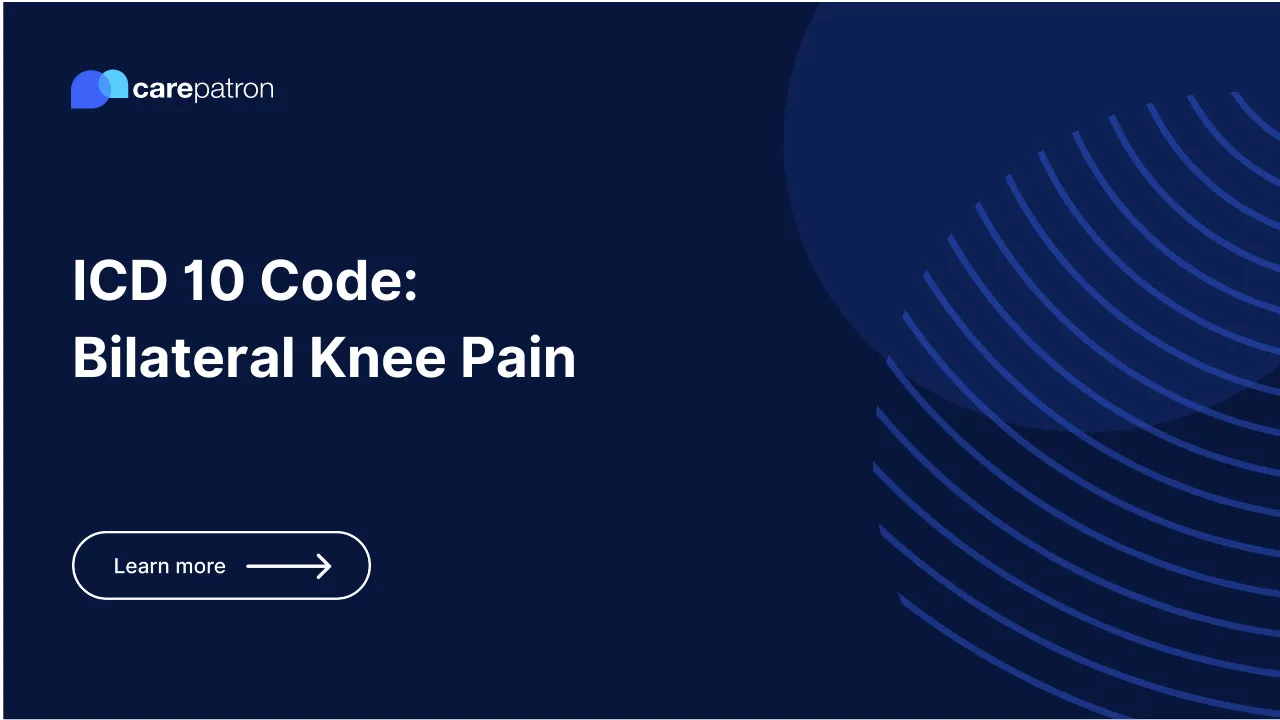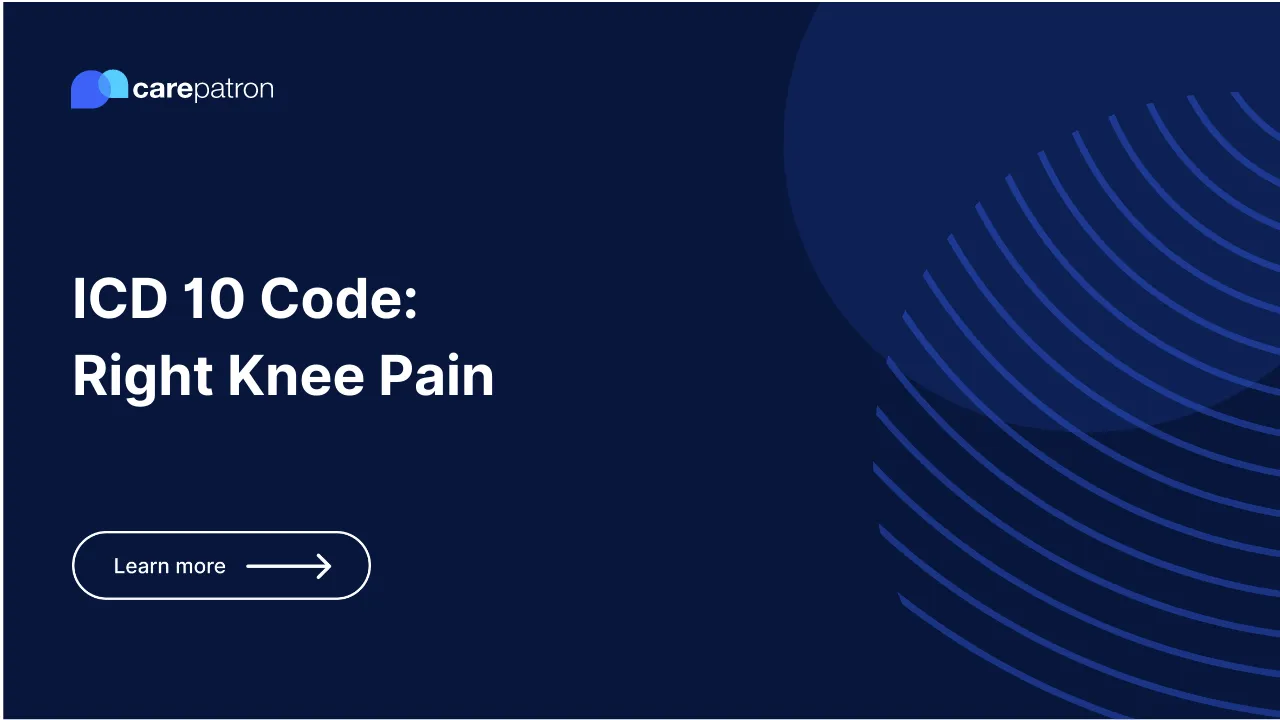
What Gout ICD-10 codes can I use?
If you’re looking for Gout ICD codes, you’ll be spoiled for choice because there are many. We selected six examples to show you the different types you can pick from to give you an idea of what to expect when looking for such codes. Here they are:
- M10.9 - Gout, unspecified
This ICD-10 code is meant to be used on a patient confirmed to have gout. What isn’t confirmed is the specific type of gout the patient has. Once the specific type of gout has been identified, you must use a more specific ICD-10 code.
- M10.00 - Idiopathic gout, unspecified site
This ICD-10 code is meant to be used on a patient confirmed to have idiopathic gout, a type of gout with no known reason for the hyperuricemia that the condition is known for.
- M10.10 - Lead-induced gout, unspecified site
This ICD-10 code is meant to be used on a patient confirmed to have gout that emerged due to lead toxicity.
- M10.20 - Drug-induced gout, unspecified site
This ICD-10 code is meant to be used on a patient confirmed to have gout that emerged due to using certain drugs.
- M10.30 - Gout due to renal impairment, unspecified site
This ICD-10 code is meant to be used on a patient confirmed to have gout that emerged due to problems or impairment of the kidneys (renal impairment).
- M10.40 - Other secondary gout, unspecified site
This ICD-10 code is meant to be used on a patient confirmed to have secondary gout (gout caused by medications or conditions related to hyperuricemia). In the context of this ICD-10 code, the secondary gout doesn’t have a specific ICD-10 code, unlike Items 3 to 5.
Are these Gout ICD-10 codes billable?
Yes. All of the aforementioned ICD-10 codes for Gout are valid and billable.
Clinical information about Gout:
Gout is a type of arthritis that is characterized by inflammations caused by the accumulation of uric acid crystals in the joints.
Uric acid crystals in joints cause swelling, and the swelling causes pain and discomfort. These crystals form because the body produces too much uric acid. Another reason is the kidney not performing well enough to remove uric acid from the bloodstream. Either reason will lead to the formation of uric acid crystals.
There are two kinds of gout:
- Primary Gout is basically how we described the presence of uric acid crystals and why they would form in some people. It’s also genetic and affected by diet. If people consume a lot of food with high purine counts, they risk getting gout because purines break down into uric acid. Excessive alcohol consumption contributes to this, too.
- Secondary Gout is uncommon and is caused by conditions that lead to hyperuricemia and taking certain drugs.
Synonyms include:
- Gout associated problem
- Gout monitoring status
- Gouty arthritis of left foot
- Gouty arthritis of left great toe
- Gouty bursitis
- Gouty arthritis of toe
- Primary gout
- Gout secondary to lead
- Acute gout
- Acute drug-induced gout
- ICD 10 code for gout
- ICD-10 code for gout
- ICD 10 code for gout unspecified
- ICD-10 code for gout unspecified
- ICD 10 code for history of gout

Commonly asked questions
Healthcare professionals will interview patients about their medical history, especially their families’ medical history, to check if genetics play a part in their condition. They will also conduct a physical examination and likely joint aspiration to check if the affected joint has uric acid crystals.
Healthcare professionals will administer and prescribe pain-relieving medication and uric acid level-lowering medication.
No. Gout can’t be cured. It’s also chronic, so once a person gets gout, they can expect it to recur. They can prevent it or at least lessen the severity by making significant lifestyle changes like maintaining a balanced and healthy diet, maintaining a healthy weight, and avoiding alcohol consumption.






.webp)
.webp)
.webp)
.webp)
.webp)
.webp)
.webp)
.webp)
.webp)
.webp)
.webp)
.webp)
.webp)
.webp)
.webp)
.webp)
.webp)
%2520(1).webp)
.webp)
.webp)
.webp)
.webp)
.webp)
.webp)
.webp)
.webp)
.webp)
.webp)
.webp)
.webp)
.webp)
.webp)
.webp)
%2520(1).webp)
.webp)
.webp)
.webp)
.webp)
.webp)
.webp)
.webp)
.webp)
.webp)
.webp)
.webp)
.webp)
.webp)
.webp)
.webp)
.webp)
.webp)
.webp)
.webp)
.webp)
.webp)
.webp)
.webp)
.webp)
.webp)
.webp)
.webp)
.webp)
.webp)
.webp)
.webp)
.webp)
.webp)
.webp)

.webp)
.webp)
.webp)
.webp)
.webp)













.webp)
.webp)




.webp)


